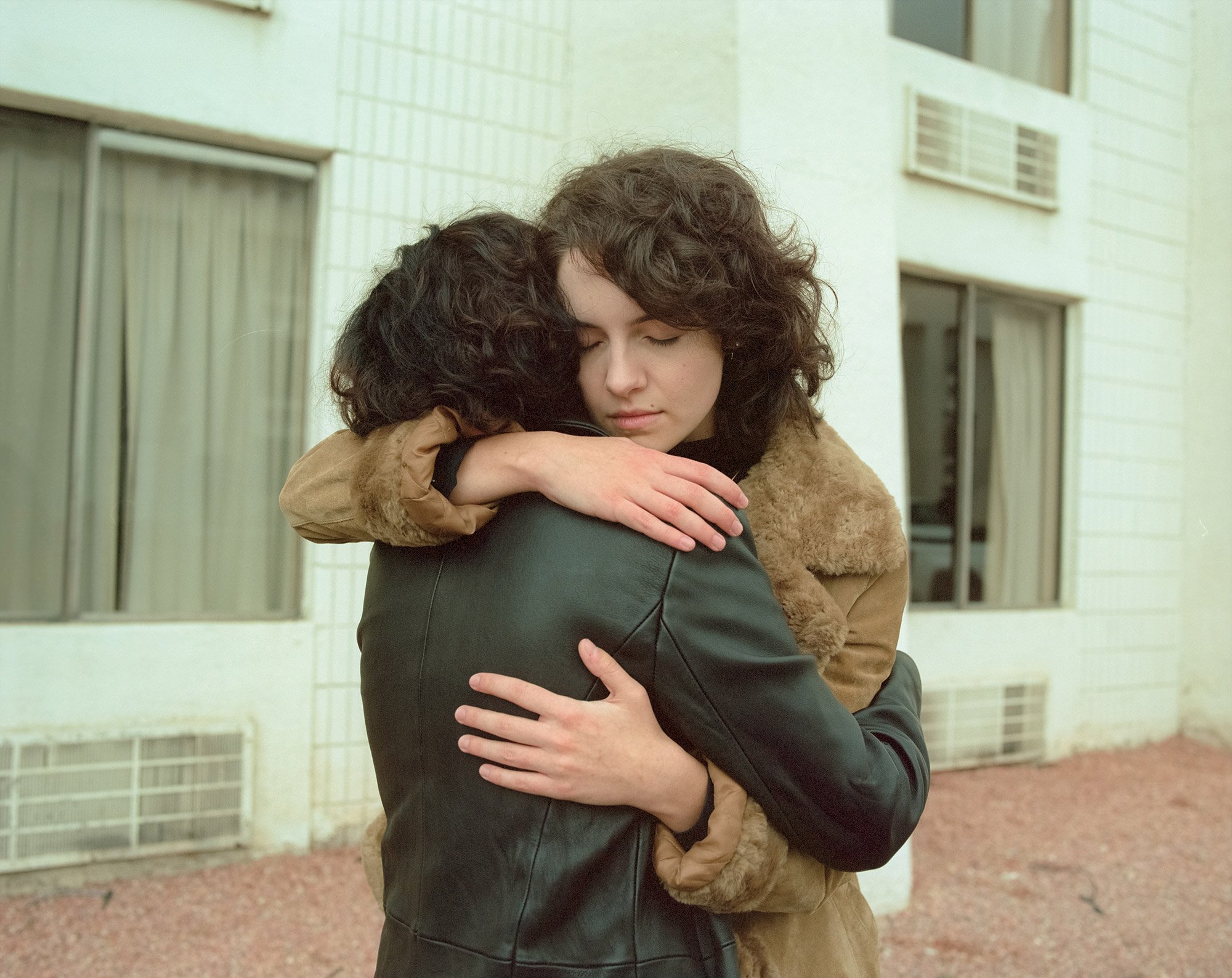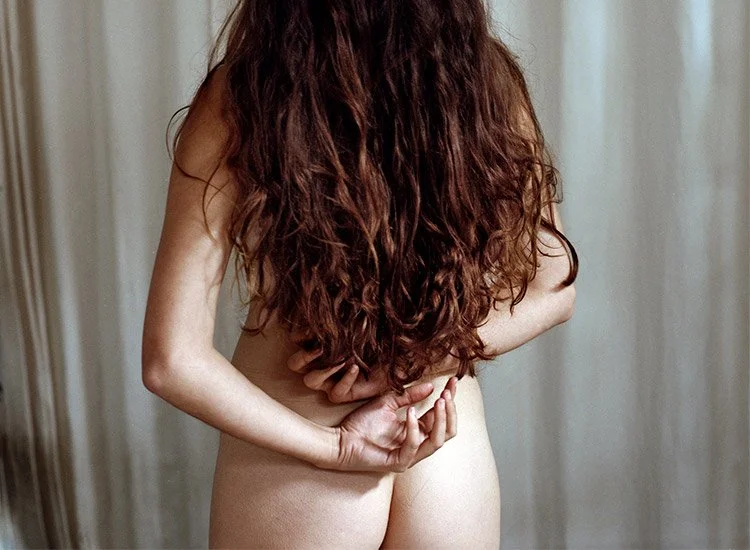Why We Create ⎯ 05 Benedetta Ristori
Why We Create is a series of five interviews with global photographers in an attempt to discover the deeper layer, drives, and motivation behind their work. We strive to bring forward the moment of realization, in which the meaningfulness of the profession is unveiled, leaving no doubt in the chosen path. In this collaboration with Open Doors Gallery, London, and the founder Tom Page we decided to speak with selected artists presented on the platform. Offering two perspectives, the photographer’s and Tom’s, who carefully chooses art to highlight, we gain a better understanding of what attracts a viewer in an image and why the specific moment becomes immortalized. Benedetta Ristori is a photographer currently based in Rome, Italy.
Through her work, we discover the most intimate feelings and thoughts of people on which Benedetta sheds light through careful work with the atmosphere in an image. We learn to see how our past affects our present through an individual and a collective prism. The photographs are profoundly expressive: the smallest details and even the lack of such, in a frame, indicate where our attention should follow or which questions should be asked. Looking at ‘common’ places (we most probably have never encountered before), we fill the already charged images with additional layers of interpretation based on the emotional echo that cannot be ignored.
In collaboration with Open Doors Gallery
@odtakeovers @odprintsales
The photographs by Benedetta Ristori are also available as prints at Open Doors Gallery
We start this interview with Benedetta looking back at the last year, thinking about the challenges it presented for creators. Benedetta explains it was inevitable to find new dimensions to research, eventually making a very much needed pause, “I can say that my experience has been complex, but at the same time, it was a year of personal growth.” We speak about her photobook East, published in 2018, the project, which lasted several years during which Benedetta visited Eastern European countries to explore the impact of the cultural and architectural past on the present. Also, we touch on the key theme in our series, Why We Create, to understand what in the process of photographing urges the person to come back to it.
‘Summing up now that the year is over, I can say that my experience has been complex, but at the same time, it was a year of personal growth. I had to face the limit of not being able to travel, a fundamental part of my process in the creation of a new body of work.’
Hi Benedetta, we’re thrilled to have you in our magazine. How would you summarize 2020 from the prism of your experience and projects?
First of all, thank you, I’m glad to be involved!
As almost everyone probably will say, 2020 has been a rough year, very challenging and surely unforgettable. Summing up now that the year is over, I can say that my experience has been complex, but at the same time, it was a year of personal growth. I had to face the limit of not being able to travel, a fundamental part of my process in the creation of a new body of work. Initially, however, I tried to produce by exploiting the interior of my home or my point of view towards the outside. Once I ran out of what I thought necessary to portray, I stopped. And this was the greatest awareness learned during the last year. To stop and always give importance to your work and creativity without forcing yourself to produce something even more if it's not part of your vision. I continued to work on commission, but as it comes to my personal work, I gave myself a break, mentally and physically. It was tiring not to be able to shoot, but I think it was worth the wait, especially as I had more time to research and study for new upcoming projects.
‘I began to assist some photographers, and after a fairly long period, I decided to abandon university studies without finishing them to devote myself entirely to photography. That was certainly an important and decisive moment.’
What are the two episodes you can share with us, which were the breakthroughs for you in the realization of your voice and vision - of becoming an artist, a photographer?
The first moment was before starting my career. I have always taken photographs, from a very young age, but when I had to choose a course of study after graduation, I did not choose a photography school. During the first years of university, however, I realized that the desire to photograph was always present, almost predominant, compared to the interest in other subjects. This is why I began to assist some photographers, and after a fairly long period, I decided to abandon university studies without finishing them to devote myself entirely to photography. That was certainly an important and decisive moment. I made this decision on my own, taking risks and following only my gut.
The second moment was when I decided to devote myself to personal long-term projects. At that moment, awareness of my vision and confidence in my work was crucial.
‘What remains and will remain more impressed into my memory is certainly being in front of the great and majestic memorials (Spomenik) built by Tito in the former Yugoslavia. They are impressive, massive architectural works immersed in desolate and delicate landscapes.’
Let’s speak about East, the almost sold-out book, which started as a series traveling from 2015 to 2018 and visiting Croatia, Bosnia and Herzegovina, Serbia, and several other countries in the region. What are some of the most striking memories of visiting Eastern European countries?
East was a long journey, from which I learned a lot about myself and about developing a long-term project. Besides that, what remains and will remain more impressed into my memory is certainly being in front of the great and majestic memorials (Spomenik) built by Tito in the former Yugoslavia. They are impressive, massive architectural works immersed in desolate and delicate landscapes. This contrast impressed me emotionally and photographically.
‘Perhaps the biggest surprise was the impressive variety between countries so geographically close that I thought they might be more similar.’
The old buildings reminiscent of the socialistic regime are still standing and come in contrast with the feeling of the modern world. Some people in the images are old enough to remember the past and compare it to the present realities. How would you describe your research of those cultures?
When I study the history of the populations I am about to visit, I try not to create a preconception. I try to keep my mind free to face the first impression in an unconditioned way - as much as possible. I already knew people from the places I visited, but I knew them outside their land.
I encountered great differences among the populations; in Moldova, for example, I found a greater 'attachment' to the past than in other countries, not to mention Transnistria, which is still living in a very delicate situation. In Serbia, Bosnia, and Croatia the memory of the war is so close that I found many people willing to tell their stories, but just as so, many avoid the subject.
What came as a surprise for you?
Perhaps the biggest surprise was the impressive variety between countries so geographically close that I thought they might be more similar. For me, it was a continuous discovery, and I hope to be able to come back again soon to deepen my knowledge of those lands. For now, I am limiting myself to books and documentaries.
‘The research for an atmosphere suspended in space and time. It is crucial in my vision to represent that moment. Whether it's a portrait or a landscape, I am naturally drawn to that kind of feeling.’
What, in your opinion, is the most profound emotion that you experience, which drives you to continue working on projects and create?
Exploring unknown realities and creating a memory is a unique emotion. The whole process is a continuous revelation: from the initial research to the journey itself, to the development of the photos, and the final editing.
Your images are cinematic and present a narrative, a story, that unfolds in one’s imagination with the following events and meanings. Creating both staged and instant photography, working on portraits as with Human Being series, landscapes, and objects in their respective space - what, in your opinion, is the main element that builds this story in your works?
The research for an atmosphere suspended in space and time. It is crucial in my vision to represent that moment. Whether it's a portrait or a landscape, I am naturally drawn to that kind of feeling. When I include the human presence, it's always contextualized in a space. To tell a story, I rarely focus on close-ups or details that don't also describe the surrounding atmosphere.
‘My intent is to tell a story, or, as often happens, to make the viewer imagine it. I am very interested in the multiple interpretations and the different feelings that can be found, showing images of 'common' places or objects of frequent use. For me, it’s a personal journey through.’
The recent and ongoing project you’re working on is the research of interiors, of the most personal scenery a person creates for oneself when each element is a part of the life story. What is your main interest or the question you attempt to answer with this research?
My intent is to tell a story, or, as often happens, to make the viewer imagine it. I am very interested in the multiple interpretations and the different feelings that can be found, showing images of 'common' places or objects of frequent use. For me, it’s a personal journey through my feelings and memories - I have always been fascinated by photographic exploration and the discovery of places and objects rather than faces and bodies - but beyond that in the moment of contact between the image and the viewer, the sense given to the image is amplified.
Another interesting aspect is related to poetry. After reading poetry books, I find that there is a great connection between the sensations that some of them evoke and those experienced by photographing and seeing interior photos. The absence of human presence stimulates the imagination more, and this is very fascinating.
Explore the series ‘Why We Create’
Kent Andreasen
We start our conversation with Kent from the technical aspect and his decision to start shooting on a large camera format, later we move towards discussing…
Read More
Maria Lax
We discuss with Maria the preparation for the Photo London event, the effect the pandemic had on her work offline. Maria provides a perspective on…
Read More
Max Miechowski
We speak with Max about large-scale printing and custom framing, which he recently started to examine. We discuss the Helter Skelter photograph and the…
Read More
Berber Theunissen
In this interview, we speak with Berber about one of the main themes in her work, motherhood, and touch on the intrinsic changes in the professional and…



















